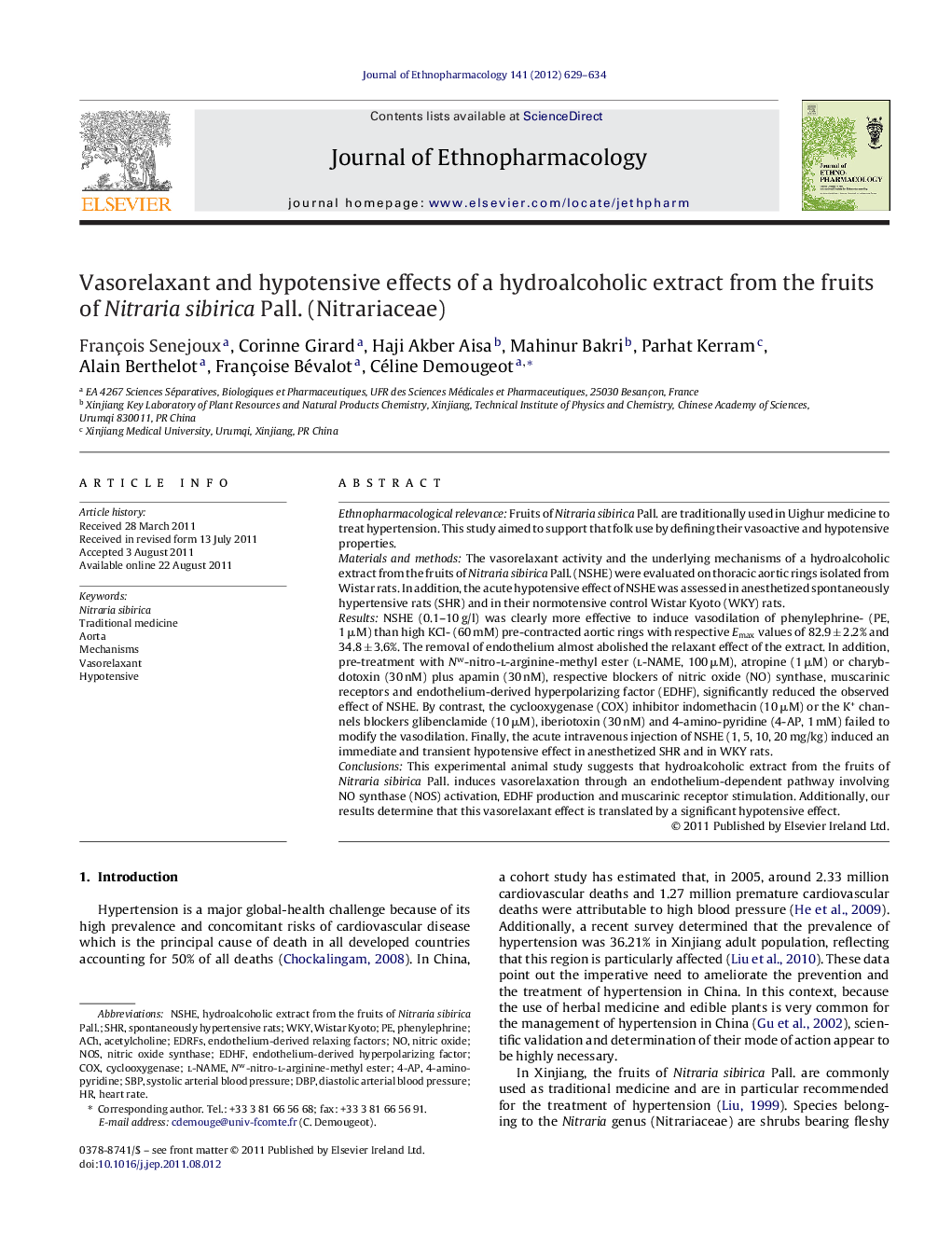| Article ID | Journal | Published Year | Pages | File Type |
|---|---|---|---|---|
| 2545598 | Journal of Ethnopharmacology | 2012 | 6 Pages |
Ethnopharmacological relevanceFruits of Nitraria sibirica Pall. are traditionally used in Uighur medicine to treat hypertension. This study aimed to support that folk use by defining their vasoactive and hypotensive properties.Materials and methodsThe vasorelaxant activity and the underlying mechanisms of a hydroalcoholic extract from the fruits of Nitraria sibirica Pall. (NSHE) were evaluated on thoracic aortic rings isolated from Wistar rats. In addition, the acute hypotensive effect of NSHE was assessed in anesthetized spontaneously hypertensive rats (SHR) and in their normotensive control Wistar Kyoto (WKY) rats.ResultsNSHE (0.1–10 g/l) was clearly more effective to induce vasodilation of phenylephrine- (PE, 1 μM) than high KCl- (60 mM) pre-contracted aortic rings with respective Emax values of 82.9 ± 2.2% and 34.8 ± 3.6%. The removal of endothelium almost abolished the relaxant effect of the extract. In addition, pre-treatment with Nw-nitro-l-arginine-methyl ester (l-NAME, 100 μM), atropine (1 μM) or charybdotoxin (30 nM) plus apamin (30 nM), respective blockers of nitric oxide (NO) synthase, muscarinic receptors and endothelium-derived hyperpolarizing factor (EDHF), significantly reduced the observed effect of NSHE. By contrast, the cyclooxygenase (COX) inhibitor indomethacin (10 μM) or the K+ channels blockers glibenclamide (10 μM), iberiotoxin (30 nM) and 4-amino-pyridine (4-AP, 1 mM) failed to modify the vasodilation. Finally, the acute intravenous injection of NSHE (1, 5, 10, 20 mg/kg) induced an immediate and transient hypotensive effect in anesthetized SHR and in WKY rats.ConclusionsThis experimental animal study suggests that hydroalcoholic extract from the fruits of Nitraria sibirica Pall. induces vasorelaxation through an endothelium-dependent pathway involving NO synthase (NOS) activation, EDHF production and muscarinic receptor stimulation. Additionally, our results determine that this vasorelaxant effect is translated by a significant hypotensive effect.
Graphical abstractThe present study suggests that fruits of Nitraria sibirica induce “vasorelaxation” through an endothelium-dependent pathway involving NO synthase activation, EDHF production and muscarinic stimulation. Additionally, our results determine that this vasorelaxant effect is translated by a significant “hypotensive effect”.Figure optionsDownload full-size imageDownload high-quality image (188 K)Download as PowerPoint slide
